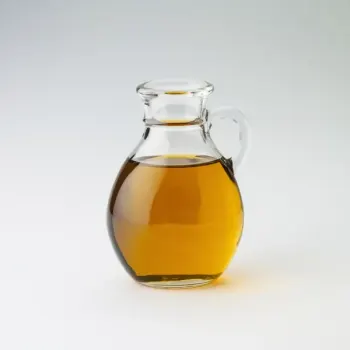Mirin and Dry Sherry are both cooking liquids used to enhance flavors in dishes, with Mirin being a sweet Japanese rice wine ideal for Asian cuisine, and Dry Sherry a fortified wine from Spain adding complexity to Western dishes. They differ in sweetness, alcohol content, and flavor profiles.

Mirin is a sweet Japanese rice wine, essential in Japanese cuisine. It brings a mild sweetness and a hint of umami to dishes, and is used in sauces, marinades, and glazes.

Dry Sherry is a fortified wine from Spain with a nutty, complex flavor profile. It's commonly used in Western cooking to add depth to sauces, soups, and stews.
Mirin has a sweet, syrupy taste with a lower alcohol content and a subtle umami flavor. Dry Sherry, on the other hand, is less sweet, has a higher alcohol content, and offers a nutty, sometimes slightly salty flavor. The consistency of Mirin is thicker, while Dry Sherry is more wine-like. Mirin is derived from rice, whereas Dry Sherry is made from grapes.

Your ultimate Recipe Box, Meal Planner, and Cooking Class all in one
Ideal for teriyaki sauce, miso glaze, and sushi rice seasoning. Mirin imparts a gentle sweetness and helps in creating a glossy finish on glazes. When using Mirin, expect a subtle sweetness that enhances other flavors without overpowering them. Suitable for stir-fries, dumpling fillings, and noodle dishes. Dry Sherry adds a complex flavor profile that can complement soy sauce and sesame oil. It's best used sparingly to avoid dominating the dish.
Can be used in seafood marinades and dressings for a touch of sweetness. Mirin works well with ingredients like olive oil and mustard, offering a balance to vinaigrettes. Perfect for deglazing pans, enhancing soups like French onion, and in rich sauces for meats. Dry Sherry introduces a depth of flavor that can elevate the overall taste of hearty and savory dishes.
While not commonly used in desserts, a small amount can add an intriguing sweetness to fruit-based sauces or syrups, complementing the natural sugars. An excellent addition to dessert recipes like trifles, poached fruits, and certain baked goods. Dry Sherry imparts a warm, rich flavor and aroma that can make desserts feel more sophisticated.
Both Mirin and Dry Sherry can add a flavorful dimension to your dishes with moderate nutritional impact when used in small amounts.
| Nutrient | Mirin ( per Tablespoon ) | Dry Sherry ( per Tablespoon ) |
|---|---|---|
| Fat | 0g | 0g |
| Sodium | 0mg | 1mg |
| Alcohol | 1.7g | 2.7g |
| Protein | 0g | 0g |
| Calories | 42 | 18 |
| Carbohydrates | 8.5g | 0.5g |
Yes, but you may want to add less sugar to the stew, as Mirin is sweeter than Dry Sherry.
Apple cider vinegar mixed with a pinch of sugar can substitute for Dry Sherry without the alcohol.
Mirin is a type of sweet rice wine, but it's specifically made for cooking and has a lower alcohol content compared to other sweet rice wines.
Yes, Dry Sherry can be used in a marinade for fish, providing a rich, nutty flavor.
Mirin does not require refrigeration due to its high sugar content, but Dry Sherry should be refrigerated to maintain its flavor.